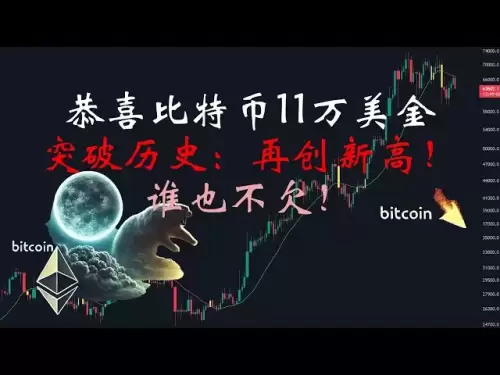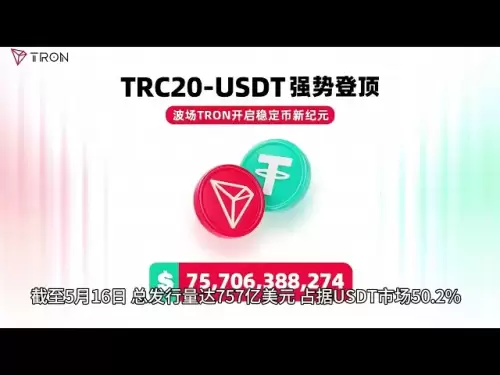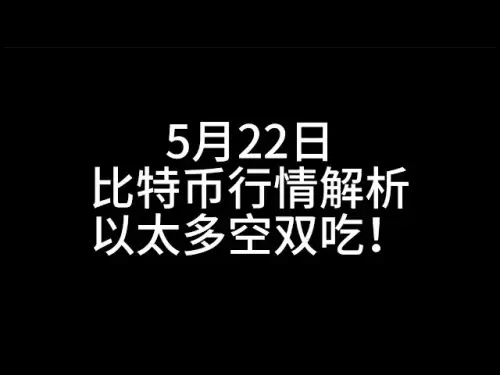-
 Bitcoin
Bitcoin $110,425.0578
3.76% -
 Ethereum
Ethereum $2,663.2795
4.82% -
 Tether USDt
Tether USDt $1.0000
-0.02% -
 XRP
XRP $2.4333
3.49% -
 BNB
BNB $682.8548
4.79% -
 Solana
Solana $179.3837
6.53% -
 USDC
USDC $0.9997
-0.01% -
 Dogecoin
Dogecoin $0.2431
7.76% -
 Cardano
Cardano $0.7983
6.17% -
 TRON
TRON $0.2726
0.94% -
 Sui
Sui $4.1423
8.28% -
 Chainlink
Chainlink $16.5245
4.95% -
 Hyperliquid
Hyperliquid $31.6917
19.68% -
 Avalanche
Avalanche $24.2736
7.50% -
 Stellar
Stellar $0.2999
4.01% -
 Shiba Inu
Shiba Inu $0.0...01535
5.81% -
 Hedera
Hedera $0.2030
3.78% -
 Bitcoin Cash
Bitcoin Cash $416.6836
4.85% -
 UNUS SED LEO
UNUS SED LEO $8.8656
0.74% -
 Toncoin
Toncoin $3.1753
4.37% -
 Polkadot
Polkadot $4.8913
5.24% -
 Litecoin
Litecoin $98.7909
4.23% -
 Monero
Monero $398.4044
9.51% -
 Bitget Token
Bitget Token $5.2886
2.94% -
 Pepe
Pepe $0.0...01456
8.99% -
 Pi
Pi $0.8392
6.71% -
 Dai
Dai $0.9999
0.01% -
 Ethena USDe
Ethena USDe $1.0005
-0.01% -
 Bittensor
Bittensor $471.0688
12.89% -
 Uniswap
Uniswap $6.4140
2.39%
How to combine EMA with trend lines?
Combining EMAs with trend lines enhances crypto trading by identifying trends and entry/exit points, using tools like 9-day and 21-day EMAs and relevant price connections.
May 22, 2025 at 10:50 am
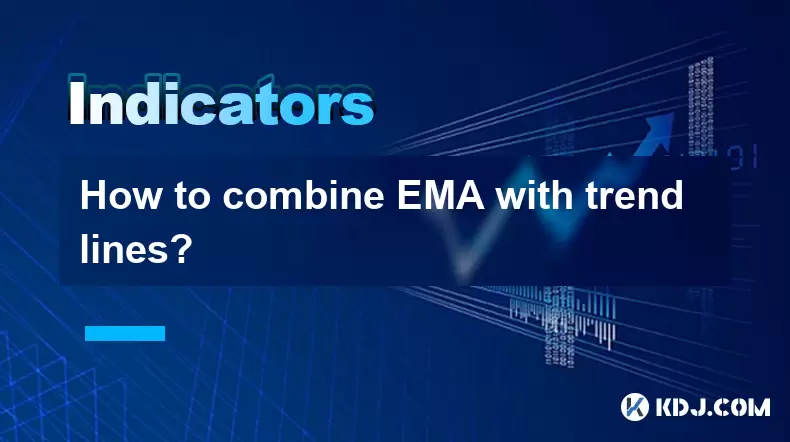
Combining Exponential Moving Averages (EMAs) with trend lines is a powerful method for technical analysis in the cryptocurrency market. This strategy helps traders identify potential entry and exit points, as well as understand the overall direction of the market. By integrating these two tools, traders can enhance their ability to make informed decisions based on both short-term and long-term trends.
Understanding Exponential Moving Averages (EMAs)
Exponential Moving Averages (EMAs) are a type of moving average that places a greater weight and significance on the most recent data points. This makes EMAs more responsive to new information compared to Simple Moving Averages (SMAs). In the context of cryptocurrency trading, EMAs can be used to identify the direction of the price trend and potential reversal points. Commonly used periods for EMAs in crypto trading include the 9-day, 21-day, and 50-day EMAs.
To calculate an EMA, you start with a Simple Moving Average (SMA) for the initial period and then apply the formula:
[ \text{EMA}{\text{today}} = (\text{Price}{\text{today}} \times \text{Multiplier}) + (\text{EMA}_{\text{yesterday}} \times (1 - \text{Multiplier})) ]
where the Multiplier is calculated as ( \frac{2}{\text{Period} + 1} ).
Understanding Trend Lines
Trend lines are straight lines drawn on a chart to connect a series of price points. They help traders visualize the direction of the market and identify potential support and resistance levels. In the cryptocurrency market, trend lines can be drawn to connect the highs and lows of price movements, providing a clear picture of the current trend.
There are two main types of trend lines:
- Uptrend Lines: These are drawn by connecting the lows of an upward price movement. They act as support levels.
- Downtrend Lines: These are drawn by connecting the highs of a downward price movement. They act as resistance levels.
Combining EMAs with Trend Lines
To effectively combine EMAs with trend lines, traders need to understand how these two tools can complement each other. EMAs can confirm the validity of a trend line, while trend lines can help validate the signals provided by EMAs.
Here’s how to combine these tools:
Identify the Trend with EMAs: Start by plotting the EMAs on your chart. For example, use the 9-day and 21-day EMAs. If the shorter-term EMA (9-day) is above the longer-term EMA (21-day), it indicates an uptrend. Conversely, if the 9-day EMA is below the 21-day EMA, it suggests a downtrend.
Draw Trend Lines: Once you have identified the trend using EMAs, draw trend lines to connect the relevant price points. In an uptrend, connect the lows to form an uptrend line. In a downtrend, connect the highs to form a downtrend line.
Confirm Signals: Use the EMAs to confirm the signals provided by the trend lines. For example, if the price is approaching an uptrend line and the 9-day EMA is still above the 21-day EMA, it suggests that the uptrend is likely to continue. Conversely, if the price is approaching a downtrend line and the 9-day EMA is below the 21-day EMA, it suggests that the downtrend is likely to persist.
Practical Application in Cryptocurrency Trading
Let’s walk through a practical example of combining EMAs with trend lines in the context of trading Bitcoin (BTC).
Plot EMAs: Open your trading platform and plot the 9-day and 21-day EMAs on the BTC/USD chart. Observe the position of these EMAs to determine the current trend.
Draw Trend Lines: Identify the recent price movements and draw the appropriate trend lines. For instance, if BTC has been in an uptrend, connect the recent lows to form an uptrend line.
Analyze the Chart: Look for instances where the price approaches the trend line. If the 9-day EMA is above the 21-day EMA and the price bounces off the uptrend line, it could be a good entry point for a long position. Conversely, if the 9-day EMA is below the 21-day EMA and the price breaks below the downtrend line, it could be a signal to enter a short position.
Set Stop Losses and Take Profits: Use the trend lines and EMAs to set your stop-loss and take-profit levels. For example, in an uptrend, you might set your stop loss just below the uptrend line and your take profit at a resistance level identified by the EMAs.
Using EMAs and Trend Lines for Different Time Frames
EMAs and trend lines can be used across various time frames, from short-term intraday trading to long-term investment strategies. The key is to adjust the periods of the EMAs and the granularity of the trend lines according to the time frame you are analyzing.
Short-Term Trading: For intraday trading, use shorter EMA periods such as the 9-day and 21-day EMAs, and draw trend lines based on recent price movements within the day or hour.
Medium-Term Trading: For swing trading, consider using the 21-day and 50-day EMAs, and draw trend lines that connect price points over several days or weeks.
Long-Term Investing: For long-term investment strategies, use longer EMA periods such as the 50-day and 200-day EMAs, and draw trend lines that span months or even years.
Example of Combining EMAs and Trend Lines on a Chart
Let’s look at a hypothetical example of how to combine EMAs and trend lines on a Bitcoin chart.
Chart Setup: Open your trading platform and load a BTC/USD chart with a 1-hour time frame.
Plot EMAs: Add the 9-day and 21-day EMAs to the chart.
Draw Trend Lines:
- If you see that Bitcoin has been trending upwards, connect the recent lows to form an uptrend line.
- If Bitcoin has been trending downwards, connect the recent highs to form a downtrend line.
Analyze the Chart:
- Observe where the 9-day EMA crosses the 21-day EMA. If the 9-day EMA is above the 21-day EMA, it confirms an uptrend.
- Look for instances where the price approaches the trend line. If the price bounces off the uptrend line and the 9-day EMA remains above the 21-day EMA, it could be a good entry point for a long position.
Trade Execution:
- Enter a long position when the price bounces off the uptrend line and the EMAs confirm the uptrend.
- Set your stop loss just below the uptrend line to manage risk.
- Set your take profit at a resistance level identified by the EMAs or a previous high.
Frequently Asked Questions
Q: Can EMAs and trend lines be used for all cryptocurrencies?
A: Yes, EMAs and trend lines can be applied to any cryptocurrency that has sufficient trading volume and price data. However, the effectiveness of these tools may vary depending on the liquidity and volatility of the specific cryptocurrency.
Q: How often should I redraw my trend lines?
A: Trend lines should be redrawn whenever there is a significant change in the price action that invalidates the existing trend line. This could be a break of the trend line or a shift in the overall market direction. Regularly review your charts to ensure your trend lines remain relevant.
Q: What are the risks of using EMAs and trend lines in trading?
A: The main risks include false signals and market volatility. EMAs can sometimes give false signals during choppy market conditions, and trend lines can be broken by sudden price movements. It’s crucial to use other indicators and risk management strategies to mitigate these risks.
Q: Can I use EMAs and trend lines on different time frames simultaneously?
A: Yes, you can use EMAs and trend lines on different time frames to get a more comprehensive view of the market. For example, you might use a 1-hour chart for short-term trading decisions and a daily chart for long-term trend analysis. Just ensure that the periods of the EMAs and the granularity of the trend lines are adjusted accordingly.
Disclaimer:info@kdj.com
The information provided is not trading advice. kdj.com does not assume any responsibility for any investments made based on the information provided in this article. Cryptocurrencies are highly volatile and it is highly recommended that you invest with caution after thorough research!
If you believe that the content used on this website infringes your copyright, please contact us immediately (info@kdj.com) and we will delete it promptly.
- Bitcoin (BTC) Breaks Above $110,000, Reigniting Bullish Sentiment
- 2025-05-22 16:20:14
- Bitcoin price jumped 3% to trade at $110651.28 as the cryptocurrency reaches a new all-time high
- 2025-05-22 16:20:14
- More than 200 wealthy, mostly anonymous crypto people are heading to Washington D.C.
- 2025-05-22 16:15:13
- Synthetix scraps its $27M plan to acquire crypto options platform Derive after negative community feedback
- 2025-05-22 16:15:13
- The crypto market bounced back this week as Bitcoin surged to a record high of over $100,000
- 2025-05-22 16:10:12
- Celebrate Bitcoin Pizza Day With This Historic Movement
- 2025-05-22 16:10:12
Related knowledge
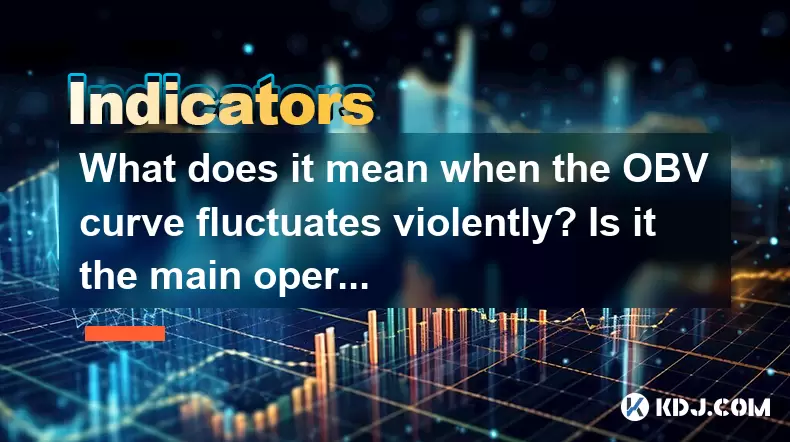
What does it mean when the OBV curve fluctuates violently? Is it the main operator or noise interference?
May 22,2025 at 03:57pm
The On-Balance Volume (OBV) indicator is a popular technical analysis tool used by traders and investors within the cryptocurrency market to predict price movements based on volume changes. When the OBV curve fluctuates violently, it raises questions about the underlying causes and the implications for trading strategies. In this article, we will explor...
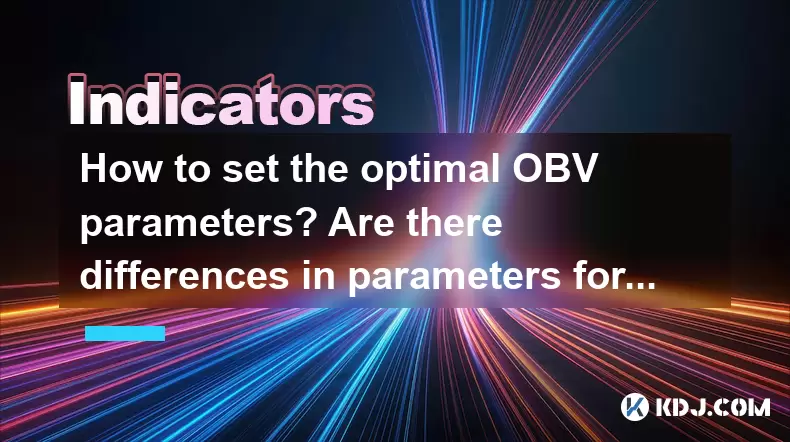
How to set the optimal OBV parameters? Are there differences in parameters for different cycles?
May 22,2025 at 04:21pm
The On-Balance Volume (OBV) indicator is a popular technical analysis tool used by cryptocurrency traders to predict price movements based on volume flow. Setting the optimal OBV parameters is crucial for maximizing the effectiveness of this indicator. This article will delve into how to set these parameters and whether they should be adjusted for diffe...
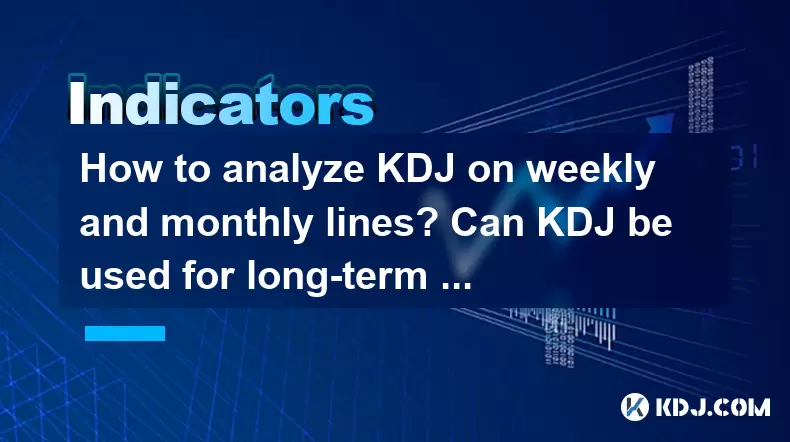
How to analyze KDJ on weekly and monthly lines? Can KDJ be used for long-term operations?
May 22,2025 at 02:21pm
Analyzing the KDJ indicator on weekly and monthly lines is a valuable skill for traders interested in long-term cryptocurrency operations. The KDJ, also known as the Stochastic Oscillator, is a momentum indicator that compares a closing price of a cryptocurrency to its price range over a certain period. By applying the KDJ to weekly and monthly timefram...
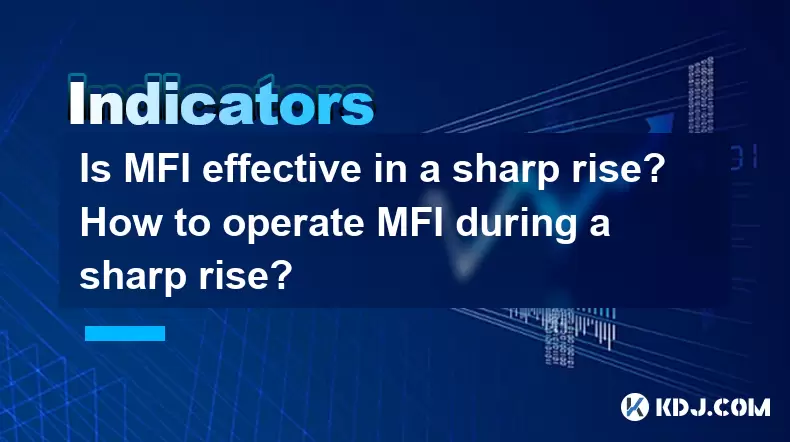
Is MFI effective in a sharp rise? How to operate MFI during a sharp rise?
May 22,2025 at 02:07pm
Is MFI effective in a sharp rise? How to operate MFI during a sharp rise? The Money Flow Index (MFI) is a popular technical indicator used by traders to gauge the strength of money flowing in and out of a security. It is particularly useful in identifying overbought and oversold conditions in the market. In this article, we will explore the effectivenes...
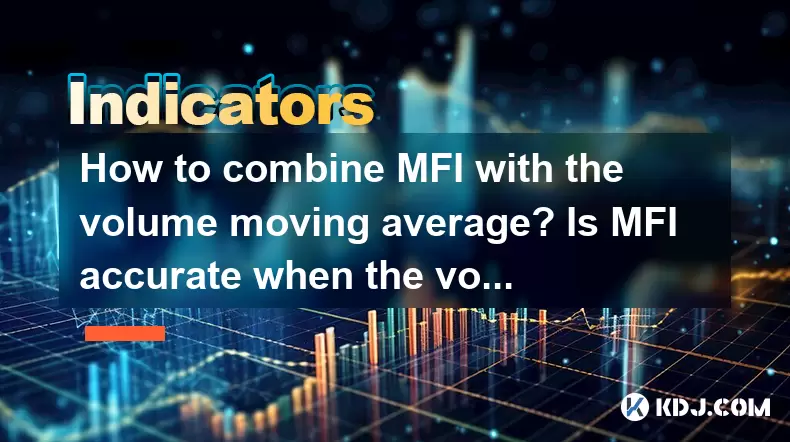
How to combine MFI with the volume moving average? Is MFI accurate when the volume changes?
May 22,2025 at 03:43pm
Combining the Money Flow Index (MFI) with the Volume Moving Average (VMA) can provide traders with a more comprehensive view of market trends and potential trading opportunities. The MFI is a momentum indicator that measures the inflow and outflow of money into a security over a specific period, while the VMA helps smooth out volume data to identify tre...
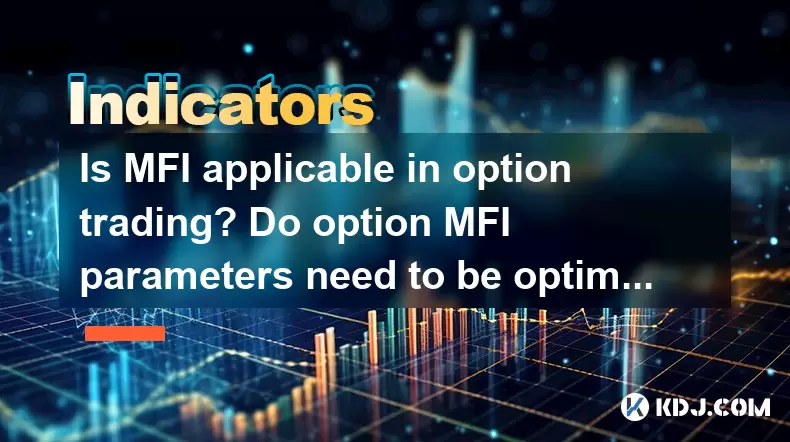
Is MFI applicable in option trading? Do option MFI parameters need to be optimized?
May 22,2025 at 02:15pm
The Money Flow Index (MFI) is a popular technical indicator used by traders to gauge the strength of money flowing in and out of a security. While the MFI is commonly applied to stocks and other financial instruments, its applicability in option trading is a topic of interest for many traders. In this article, we will explore whether MFI can be effectiv...

What does it mean when the OBV curve fluctuates violently? Is it the main operator or noise interference?
May 22,2025 at 03:57pm
The On-Balance Volume (OBV) indicator is a popular technical analysis tool used by traders and investors within the cryptocurrency market to predict price movements based on volume changes. When the OBV curve fluctuates violently, it raises questions about the underlying causes and the implications for trading strategies. In this article, we will explor...

How to set the optimal OBV parameters? Are there differences in parameters for different cycles?
May 22,2025 at 04:21pm
The On-Balance Volume (OBV) indicator is a popular technical analysis tool used by cryptocurrency traders to predict price movements based on volume flow. Setting the optimal OBV parameters is crucial for maximizing the effectiveness of this indicator. This article will delve into how to set these parameters and whether they should be adjusted for diffe...

How to analyze KDJ on weekly and monthly lines? Can KDJ be used for long-term operations?
May 22,2025 at 02:21pm
Analyzing the KDJ indicator on weekly and monthly lines is a valuable skill for traders interested in long-term cryptocurrency operations. The KDJ, also known as the Stochastic Oscillator, is a momentum indicator that compares a closing price of a cryptocurrency to its price range over a certain period. By applying the KDJ to weekly and monthly timefram...

Is MFI effective in a sharp rise? How to operate MFI during a sharp rise?
May 22,2025 at 02:07pm
Is MFI effective in a sharp rise? How to operate MFI during a sharp rise? The Money Flow Index (MFI) is a popular technical indicator used by traders to gauge the strength of money flowing in and out of a security. It is particularly useful in identifying overbought and oversold conditions in the market. In this article, we will explore the effectivenes...

How to combine MFI with the volume moving average? Is MFI accurate when the volume changes?
May 22,2025 at 03:43pm
Combining the Money Flow Index (MFI) with the Volume Moving Average (VMA) can provide traders with a more comprehensive view of market trends and potential trading opportunities. The MFI is a momentum indicator that measures the inflow and outflow of money into a security over a specific period, while the VMA helps smooth out volume data to identify tre...

Is MFI applicable in option trading? Do option MFI parameters need to be optimized?
May 22,2025 at 02:15pm
The Money Flow Index (MFI) is a popular technical indicator used by traders to gauge the strength of money flowing in and out of a security. While the MFI is commonly applied to stocks and other financial instruments, its applicability in option trading is a topic of interest for many traders. In this article, we will explore whether MFI can be effectiv...
See all articles























